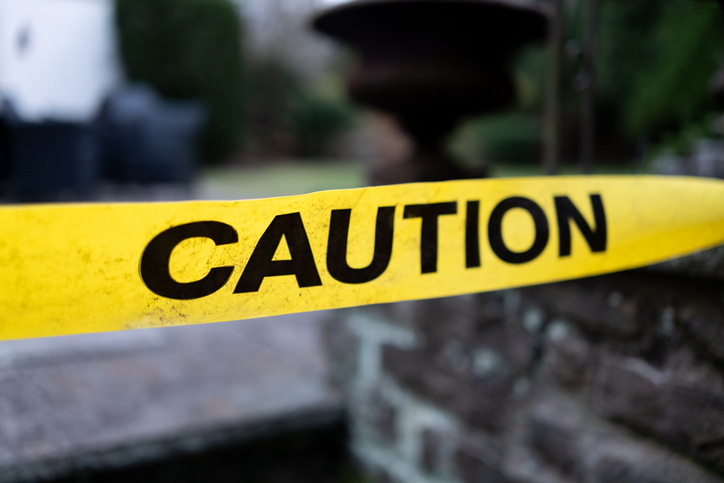
Source: Catherine McQueen / Getty
Department of Justice’s National Missing and Unidentified Persons System, or NamUs, provides technology, forensic services and investigative support to resolve missing person and unidentified remains cases, but the database has been underrepresenting the cases of Black and Indigenous women at disproportionate rates, according to a recent report from PBS News Hour.
The de-prioritizing of missing women who are not white, continues to be a story that has not yet found resolution despite all the work Black parents, parents of color and a few legislators, notably Rep. Ilhan Omar, have devoted to making this a national issue. In fact, law enforcement officials and advocates for missing persons revealed that there are no consistent federal standards or requirements for police agencies to input missing person cases into NamUs, as regulations differ from state to state.
While states such as North Dakota, New York and Montana have laws mandating law enforcement to enter missing or unidentified person cases into NamUs, others like Missouri and many more do not have such provisions.
This leads to thousands of missing person reports for Black and Indigenous women being swept under the rug. As of January 2024, 23,972 unresolved missing persons cases were reported in NamUs. According to the report, 37% were Black teenage women. Around 840 cases went unresolved for incidents involving missing American Indian and Alaska natives, with 31% of those cases involving American Indian and Alaskan teenage women.
NamUs failed 16-year-old Shemika Cosey.
Paula Hill, whose 16-year-old daughter Shemika Cosey went missing in 2008 in Berkeley, Missouri, is frustrated by the NamUs’ flawed system. She had to figure out how to enter information about her daughter’s case into the system without help from law enforcement. Hill, who is Black, has been waiting painstakingly for a decade, praying that someone will come forward with details about her daughter’s whereabouts.
Per 5 On Your Side, Cosey embarked on what seemed to be an ordinary sleepover at her cousin’s residence in Napier in 2008. However, the dawn brought forth an unsettling revelation — Cosey was nowhere to be found. Her aunt later discovered that the front door was left ajar. Though her attire and overnight belongings remained untouched within the cousin’s house, Cosey personal objects, notably her purse and jacket, had mysteriously vanished.
“My daughter was a sister, she was a cousin, an auntie — she was a person,” Hill told PBS News Hour. “We have not heard anything from her. No signs, no sightings. Nothing. Nothing at all. … She just disappeared.”
Cosey’s baffling disappearance casts a troubling spotlight on Missouri’s missing persons dilemma. Over half of the state’s missing cases involve Black victims, many teenagers just like Cosey, according to the Missouri State Highway Patrol.
Although NamUs provides support for cases involving unidentified Indigenous individuals where the cause of death is unknown or unrelated to homicide, crucial details regarding these cases are often scant, especially concerning American Indian and Alaska Native women.
According to the U.S. Department of the Interior Indian Affairs, in 2016 alone, there were 5,712 reports of missing American Indian and Alaska Native women and girls recorded in the federal missing persons database managed by the U.S. Department of Justice. However, NamUs only documented 116 of these cases.
What is being done to change the issue?
Missouri State Senator Angela Mosley has introduced Senate Bill 890, aimed at establishing a Missing and Murdered African American Women Taskforce in her state. This task force would offer recommendations and practical measures to address violence against Black women and girls. The bill has successfully passed through the Senate and is currently undergoing legislative review.
In 2023, Minnesota took the lead by becoming the first state to establish an office dedicated to missing and murdered African American women and girls. Led by State Representative Ruth Richardson, this department focuses on investigating cold cases and reopening suspicious cases involving Black women or girls initially deemed suicides or drug overdoses. Moreover, the office collaborates with law enforcement and acts as a safe point of contact for witnesses reluctant to engage with the police.
Similarly, the Missing and Murdered Indigenous Relatives Taskforce of Colorado is diligently gathering vital data to aid in locating missing loved ones within the American Indian and Alaska Native communities.
And in 2022, President Biden signed Billy’s Law, legislation designed to enhance accessibility and data exchange between NamUs and the National Crime Information Center. Let’s hope that effort finally takes meaningful shape.
See More:
Rep. Ilhan Omar Announces The Brittany Clardy Act For Missing And Murdered Black Women and Girls
Carlee Russell’s Disappearance Draws Attention To Disturbing Rates Of Missing Black Women
The post REPORT: Department Of Justice Underrepresenting Missing Black And Indigenous Women Cases appeared first on NewsOne.
REPORT: Department Of Justice Underrepresenting Missing Black And Indigenous Women Cases was originally published on newsone.com












